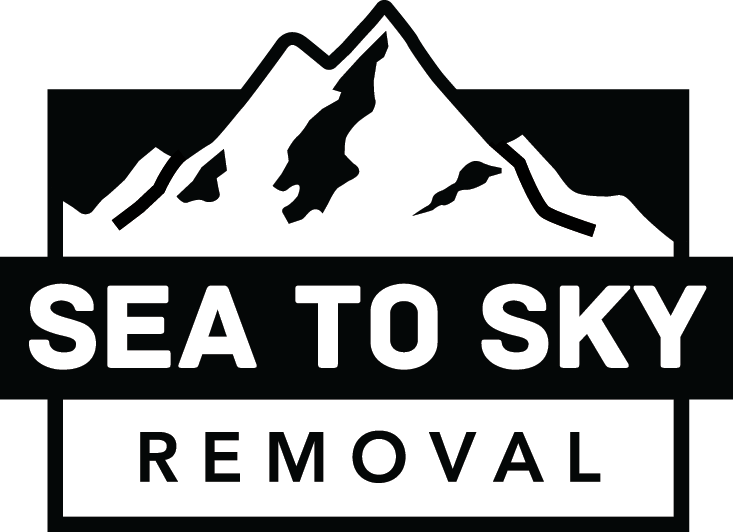We thought we’d share some of our knowledge when it comes to efficient construction waste management practices done with an environmental focus.
Having a team dedicated to keeping a construction site clean and green is the key but more importantly, how can it be implemented? By training your crew on how to dispose of all the construction waste properly and also having a waste hauler who is focused on keeping as much out of the landfill as possible.
First, may we suggest having a recycling station for metal, cardboard, and plastic (ideal for packaging foam, coffee lids, hard packaging from tools, or finishing items). We have implemented these stations on construction sites and feel they have been incredibly successful on diverting waste from our local landfills.
In regards to other construction materials perhaps considered garbage, we have broken it down for you plus if you can find dedicated spaces for all these materials and label them, you are way ahead of the game!
Drywall: This has to be separated no matter what, so we suggested keep it in a separate pile. Drywall must be date-stamped showing 1987 or newer, or pre 1987 must be accompanied by a testing report from an approved facility such as A.C.M. Environmental in Vancouver or Kinetic OHS Services in North Vancouver that shows it to be free and clear of asbestos and other banned material. For the Sea to Sky Corridor this date is 1990.
If you do not have time to get it tested we'd be happy to provide this service for you for a fee of $100 plus the testing fee. All we would need is a sample that contains a section of tape and mud (as this is where the asbestos will be found if present) and be bagged in a zip-lock bag with the address and location in the house/building where it was taken from written on it e.g kitchen or bathroom.
To learn more about sustainable recycling of drywall read our blog post about it here.
Clean Wood: Any building wood that is free and clear of paint or any stain. Most transfer stations don’t allow plywood to go in a clean wood pile but Whistler and Squamish accept it in the clean wood load. If we find lengths of 4 feet or more that can be reused we donated them to local non for profits who will repurpose them.
Dirty Wood: As mentioned above, plywood and gluelam are sadly considered garbage at most transfer stations as well as painted or stained wood so keep these in your garbage pile unless you have a project in the Sea to Sky Corridor in which they will accept plywood and gluelam in the wood pile.
Stone: If you have broken up concrete without rebar or bricks, that can actually get recycled, so keep that in a separate pile.
Food Waste: Food waste can be composted, but please keep this secure in case you have any furry visitors on your site. Being bear and critter aware is important. With that said, our solution is to have plywood boxes made with a hinged top that has double locks on it. The bins should be sized to accommodate two standard Rubbermaid bins. To save on costs, bins made by crew might be the best option. We will be able to service these as needed but expecting it to be weekly or bi-weekly depending on the size.
These bins should solely be used for the organic waste created. Wrappers or packaging will NOT go in these bins, just organics to save space and make it so these bins can be recycled straight into organics at the landfill. We will provide your site with the compostable bin liners needed to make the disposal of these as cheap and efficient as possible.
Carpet: Receiving requirements for carpet and underlay recycling must be dry and free of debris. Rolls need to be self-tied with carpet tail, string/twine or tape. Carpet and underlay should be cut in strips that are no more than 4’6” wide. No carpet from staircases, due to all the staples. Carpet and underlay must be free from staples and rolled separately. Underlay can be stacked on the same pallet as carpet. No small carpet scraps or trimmings, these go into the garbage pile. No rubber underlay. No construction debris (e.g. asbestos, sheetrock), tack strips, transition mouldings, and food scraps. We will be able to get this recycled for you so please contact us ahead of time so we can consult with you on this process.
Garbage: Keep a lot of garbage bins around your sites including clear garbage bags. Clear garbage bags also help to see what has been disposed of. We are always surprised to see so many sites without garbage bins! If you have labeled garbage bins on site your crews will know what they can dispose of in them.
Here is a list of construction waste that is considered waste:
Dirty paint brushes, anything with paint on it such as clear plastic or wood, insulation, damaged tarps, MDF, ceiling tile, coffee cups, hoses, dirty buckets, vapour barrier with any accoustic seal, tape or just plain dirty, less than 100 square feet of flooring or tile, drywall mud, used glue fillers, molding and trim that are lengths under 3 feet, particle board as well as demolition material.
If you feel overwhelmed or don’t have the time, we’d be happy to consult with you and your crew on an environmentally focused waste management strategy and get you set up. We will also clean you out once you are ready to remove the construction waste from your site. Plus our team hand separates all recyclables as well as any reusable items from actual garbage. We also live load our trucks so we can efficiently dispose materials to the correct locations such as the landfill, recycling centers, as well as any suitable local non-profit organizations.

